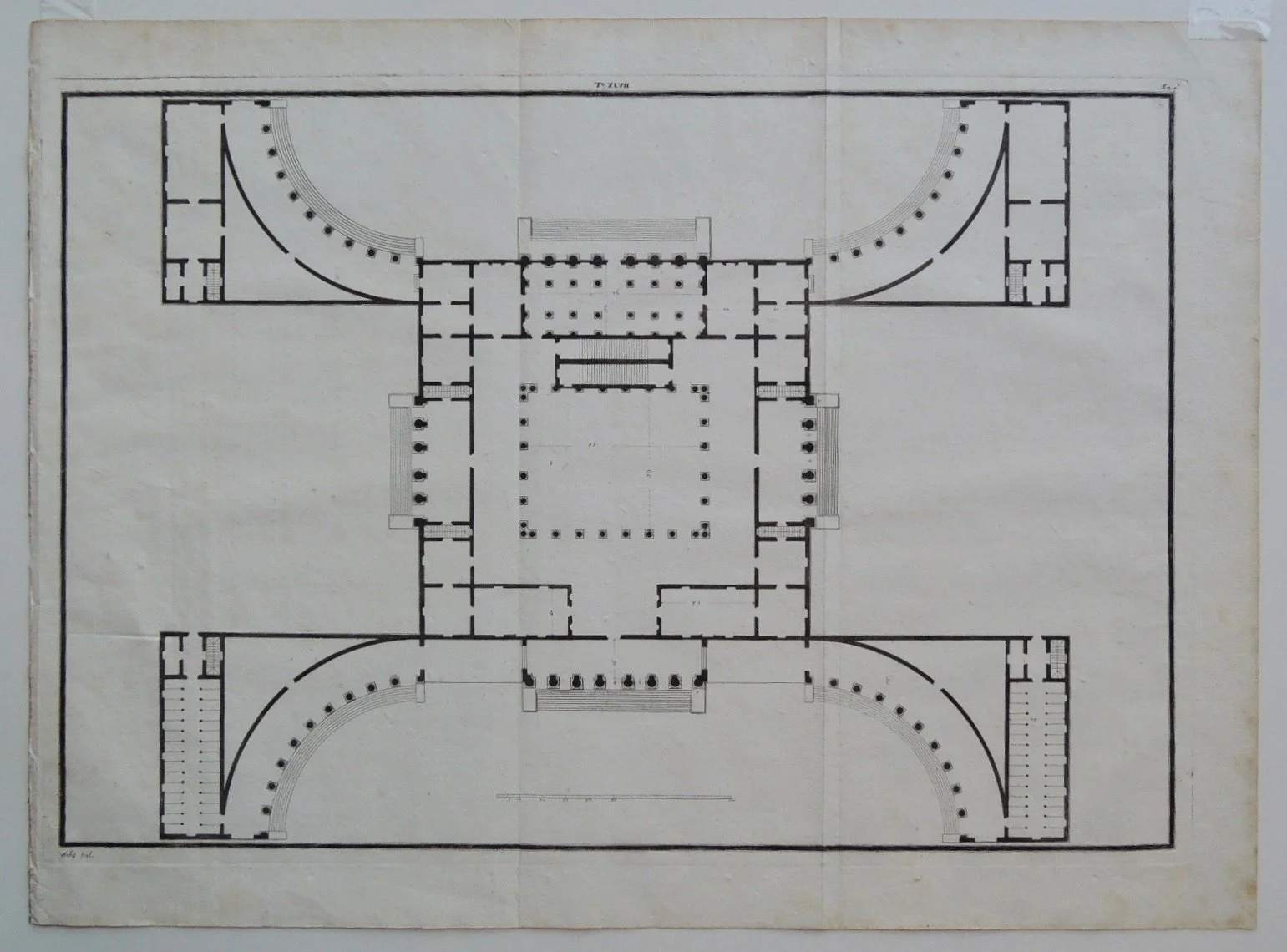Villa Mocenigo, Elevation and Plan
Villa Mocenigo, Elevation and Plan
Andrea Palladio (1508-1580), an Italian architect, theorist, and writer, began as an apprentice stone mason at thirteen in Padua. He left for nearby Vicenza a few years later, and today Palladio’s work survives in Vicenza and the surrounding countryside.
While working in a stone mason’s shop in Vicenza, Palladio’s talent was discovered by Giangiorgio Trissano, a wealthy exponent of Classical learning and humanities. Palladio went to Rome for the first time in 1541 and returned there several times over the next dozen years. Seeing Rome revolutionized Palladio’s architectural outlook. He sketched the remains of ancient buildings, and this architectural drawing was the indispensable basis of his work. He also illustrated Vitruvius’s Ten Books of Architecture, which came about because one of his wealthy patrons, Daniele Barbaro, asked Palladio to work with him on a translation and commentary of Vitruvius’s work. (Vitruvius was a first-century BC Roman architect, engineer, and writer, renowned for his treatise on architecture. His Ten Books of Architecture was the only text on architectural theory and practice to have survived from Classical antiquity.)
Palladio incorporated Vitruvius’s design theories into his architecture. He also published his Four Books of Architecture in which he documented his designs based on Classical principles. More than any other architect, Palladio shaped the building culture of the following generations. As the last of the great Renaissance architects, he converted the Classical idiom with virtuosity and independence into a body of work that later developed into the distinctive style called Palladianism, influential in many parts of the world to this day.
Our collection consists of a number of engravings from the 1786 edition of Palladio’s Four Books by Bertolli Scamozzi. Elevations of villas and palazzi in the Veneto.
17 3/4” x 24 1/4”
Condition, larger images with folds in paper from being bound in folio. Otherwise, excellent impressions, strong inking, paper in excellent condition. Sold as pair.

